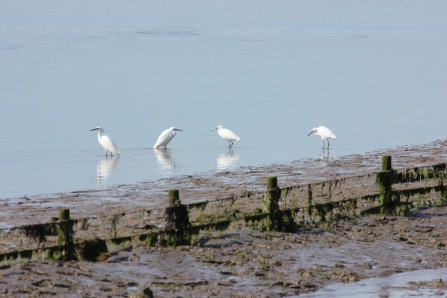We’d decided to go ahead with our July visit to the Taw-Torridge estuary, reasonably confident that we’d be welcome in the area if we took all sensible precautions. The intention, as it is every year, was to distract our teenage children with surfing and sailing.
Part way through the week, I spotted the opportunity to get a “pass” for bird watching. So I set off for Braunton early one morning to visit the Trust’s Horsey Island Reserve. It wasn’t the ideal time of day, with the tide only just beginning to go out, but I’ve learnt to take what’s on offer.
I haven’t been to Horsey Island before but, as I reached the reserve from the River Caen path, I had a sensation of familiarity. Earlier this summer I wrote an article about the reserve for Devon Life magazine, drawing on telephone conversations both with knowledgeable local residents and Gavin Bloomfield, Caen Wetlands project officer. It wasn’t how I’d planned to write the article but lockdown put a stop to me visiting in person. So I was looking forward to finally being there myself.

